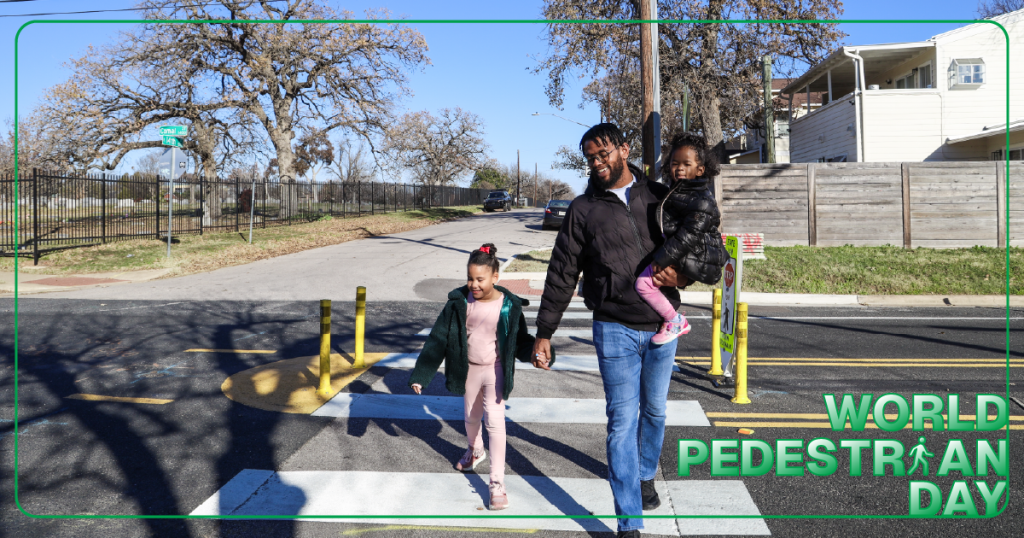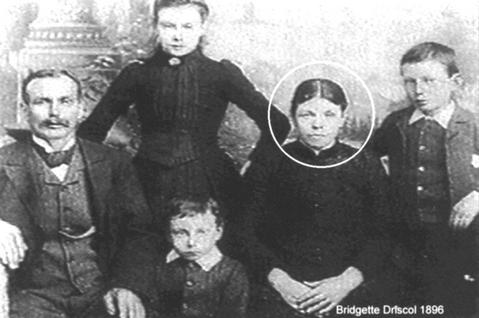World Pedestrian Day is August 17

On August 17, 1896, Bridget Driscoll became the world’s first recorded traffic fatality. The 44-year-old mother, on foot, was hit in London by what was then one of the very few gasoline-powered automobiles in existence.
The crash was investigated, and the coroner reportedly told the inquest he hoped Driscoll’s would be the last such death.
Of course, tragically, millions of automobile-related deaths followed around the world, and a huge percentage of those have been similar to Driscoll’s — a pedestrian struck by a driver-operated vehicle.

August 17 is recognized in many countries as World Pedestrian Day, when we remember Driscoll and many other victims — and to raise awareness of the safety challenges pedestrians continue to face.
The City of Austin is taking proactive steps to address those challenges. In 2015, it adopted Vision Zero, a public policy which recognizes that all traffic deaths and serious injuries are preventable and can be reduced to zero.
Central to this philosophy is a recognition that roads serve people in a variety of ways, and some users are more vulnerable. The most vulnerable of these are pedestrians, especially people who are elderly, young or have mobility impairments.
Two of the most important factors affecting pedestrian safety are vehicle speed and roadway design.
Studies have shown that higher speeds lead to a higher chance of pedestrians being killed or seriously injured. One study showed a pedestrian hit by a vehicle traveling 20 mph has a 5% chance of being killed, and this increases to 45% at 30 mph and 85% at 40 mph.
“Speeding — either exceeding the posted speed limit or driving too fast for roadway conditions — is the primary contributing factor in one out of four fatal traffic crashes in Austin,” says Shelby Smith, the Speed Management Program Manager with Austin Transportation and Public Works. “The Speed Management Program is data-driven, allowing us to identify streets with higher vehicle speeds and crashes which can cause unsafe conditions for pedestrians using those streets.
“We use this data to score and rank a list of streets, then select the top scoring streets for traffic calming projects. We often partner with other programs such as Safe Routes to School, the Pedestrian Crossing Program, Transit Enhancement, and Active Transportation and Street Design to design and implement projects that improve safety along the street.”
Smith says the scoring and ranking looks at the context of the street, including the presence of sidewalks and bicycle facilities, and proximity to transit and community destinations.
“This enables us to understand how people are using the street and implement traffic calming solutions that provide safer infrastructure for pedestrians to utilize,” Smith says.
In addition to understanding how people move along a street, it’s also critical to consider how they cross it. Jetal Bhakta, Pedestrian Crossings Program Manager for the Vision Zero Division, says pedestrian crash data shows serious injuries or fatalities rise to 43% when signalized crossings are over half a mile away, compared to 27% at a quarter-mile to half-mile distance. This highlights the need for safe, visible crossings.
This is personal for Bhakta: “I believe everyone, especially vulnerable users such as children, people who are elderly and people with mobility impairments, deserves safe pedestrian access.”
Bhakta is leading the first Americans with Disabilities Act Transition Plan for the Pedestrian Crossings program, focused on identifying locations where accessible features like properly placed push buttons, geometric improvements and audible signals are most needed.
“We’re working to identify crossing locations where people with disabilities and other vulnerable groups want or need accessible crossings,” Bhakta says. “This can include improvements such as push buttons at an appropriate height, crosswalk geometric fixes, audible pedestrian signals, and many others. Even adding trees for more shade is important.”
Trends tracked on the Vision Zero Viewer since 2021 are showing signs of improvement for pedestrians. Fatalities and serious injuries among pedestrians in Austin jumped from 109 in 2021 to 133 in 2022 but dropped to 112 and 97 in the following two years, respectively. Thus far in 2025, there have been 18 pedestrian fatalities and 23 serious injuries — each month this year has been lower than Austin’s five-year average.
Factoring in Austin’s population growth — which is among the fastest in the nation — the improvement is even clearer. In 2022, there were 64.6 fatalities or serious injuries per 100,000 residents; in 2024, there were 48.9 per 100,000. (Of course, not all collision victims in Austin are Austin residents.)
Those numbers show improvement, but they are not zero. And they aren’t just numbers — behind those statistics are real people whose lives were either lost or painfully altered forever.
The City of Austin shares the hope of that English coroner who investigated Driscoll’s death more than a century ago — we want the latest traffic fatality or injury to be the last. We will continue our Vision Zero work to make roads safer for all users, be they in an automobile, on a bike, on foot or rolling on a wheelchair or scooter. On World Pedestrian Day, we look toward a day when roadway deaths and serious injuries are a relic of the past.
To further explore what the City of Austin is doing to create safer spaces for pedestrians, please visit www.austintexas.gov/page/pedestrian.

